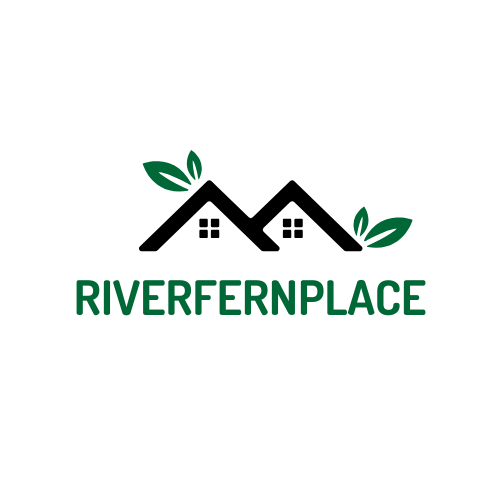In a world where the price of avocados can make or break a budget, the concept of economic self-sufficiency has never been more appealing. Imagine a life where you’re not just scraping by but thriving on your own terms. It sounds like a dream, doesn’t it? But it’s not just for hipsters in tiny homes or survivalists in the woods. Economic self-sufficiency is a powerful tool that anyone can wield to gain financial freedom and peace of mind.
By cultivating skills and resources, individuals can reduce their reliance on external systems and take charge of their financial destiny. Whether it’s growing your own veggies or mastering the art of DIY repairs, the journey to self-sufficiency is as rewarding as it is practical. So buckle up and get ready to explore how embracing this lifestyle can transform not just your wallet, but your entire outlook on life.
Economic Self Sufficiency
Economic self-sufficiency focuses on individuals or communities meeting their basic needs without external aid. This approach enhances financial independence and promotes resilience against market fluctuations.
Definition and Importance
Economic self-sufficiency refers to the ability to sustain one’s lifestyle through personal resources instead of relying on external entities. This concept holds significant importance as it fosters financial stability, boosts self-confidence, and empowers individuals to make informed decisions within their economic environments. Achieving self-sufficiency allows households to navigate hardships, such as job loss or rising living costs, with greater ease. Furthermore, it cultivates community solidarity as people share resources and knowledge, strengthening local networks.
Key Components of Economic Self Sufficiency
Several components contribute to achieving economic self-sufficiency. Developing essential skills, including budgeting and cooking, lays a solid foundation. Moreover, growing food through gardening offers a sustainable way to reduce grocery expenses. Implementing DIY projects minimizes reliance on paid services while enhancing personal capabilities. Establishing connections with local suppliers and markets helps communities support one another. Lastly, focusing on renewable energy sources can decrease utility costs and enhance long-term sustainability.
Factors Influencing Economic Self Sufficiency

Various factors significantly affect economic self-sufficiency. Understanding these elements helps individuals and communities establish independence.
Education and Employment
Education plays a crucial role in achieving economic self-sufficiency. Higher education levels often correlate with better job opportunities and increased earning potential. Access to vocational training equips individuals with practical skills needed for in-demand trades. Employment stability further contributes to financial independence. Part-time or freelance work also offers flexibility, allowing individuals to explore multiple income streams while honing their skills.
Financial Literacy and Budgeting
Financial literacy stands as a fundamental component of economic self-sufficiency. Knowledge of fundamental concepts like saving, investing, and debt management fosters responsible financial behaviors. Budgeting empowers individuals to track income and expenditures, enabling informed spending decisions. Understanding how to align financial goals with day-to-day choices promotes sustainability. Additionally, prioritizing essential expenses helps individuals avoid unnecessary debt and build savings for future needs.
Strategies to Achieve Economic Self Sufficiency
Achieving economic self-sufficiency requires deliberate efforts in specific areas, including skill development and access to resources. Below are key strategies to consider.
Skill Development and Training
Skill development serves as a cornerstone of self-sufficiency. Individuals should focus on mastering essential skills such as budgeting, cooking, and DIY repairs. These abilities reduce reliance on external services. Vocational training offers practical knowledge for in-demand trades, enhancing job prospects and potential earnings. Higher education often correlates with better opportunities, but alternative skill-building paths remain valuable. Engaging in workshops or online courses also fosters continuous learning. By prioritizing skill enhancement, individuals build confidence in managing their finances and resources effectively.
Accessing Resources and Support Programs
Accessing resources strengthens the path to economic self-sufficiency. Connecting with local suppliers facilitates direct access to affordable goods, including fresh produce. Community programs can offer support through financial literacy workshops or job training initiatives. Nonprofits and government programs may provide assistance with essential services like housing or utilities. Utilizing local libraries enables free access to educational materials and technology. Establishing networks with like-minded individuals fosters collaboration and resource sharing. By leveraging available resources, individuals can enhance their self-sufficiency journey, reducing dependence on external systems.
Challenges to Economic Self Sufficiency
Various challenges hinder economic self-sufficiency, ranging from systemic barriers to individual and community obstacles that impact success. Understanding these challenges is essential to navigate economic independence effectively.
Systemic Barriers
Systemic barriers often limit access to essential resources and opportunities needed for self-sufficiency. Economic policies frequently favor established businesses, hindering small enterprises and individual entrepreneurs. Disparities in education access create skill gaps, leaving many unable to pursue better job prospects. Additionally, inadequate support for vocational training contributes to workforce challenges. These factors collectively threaten the ability of individuals and communities to achieve independence, underscoring the need for systemic changes.
Individual and Community Obstacles
Individual and community obstacles impede progress toward economic self-sufficiency. Limited financial literacy can lead to poor budgeting and spending habits, which hinder savings ability. Anxiety about financial stability often prevents individuals from investing in skill development. Communities also face challenges such as limited access to local suppliers and resources, which restricts options for affordable goods and services. Conversely, collaboration can alleviate some of these challenges, and fostering community connections enhances resource sharing. Prioritizing education and local engagement cultivates resilience and empowers individuals toward sustainable self-sufficiency.
Financial Independence and Resilience
Embracing economic self-sufficiency offers individuals a pathway to financial independence and resilience. By cultivating essential skills and connecting with local resources, anyone can take charge of their financial future. This lifestyle not only fosters personal growth but also strengthens community bonds.
The journey toward self-sufficiency may present challenges, yet the rewards are significant. With determination and the right strategies, individuals can navigate obstacles and create a sustainable and fulfilling life. Ultimately, economic self-sufficiency empowers individuals to thrive in an unpredictable world, ensuring they meet their needs without relying solely on external systems.

